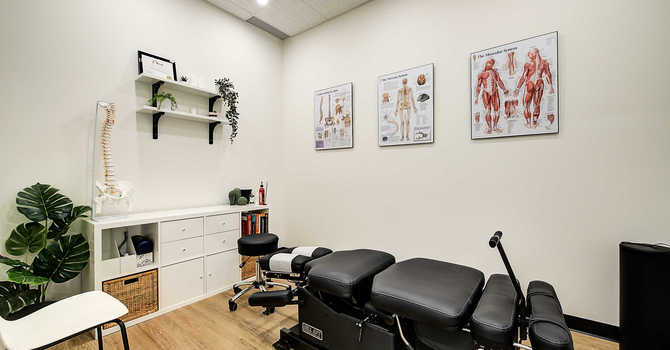If you're struggling on the links because your low back is bothering you, you're not alone. Roughly 82% of golf injuries are due to overuse. Whether you're an amateur who plays a few rounds a year or a professional grinding it out on tour, you're low back may be susceptible to injury.

Golf is an intricate yet physically demanding sport. An incredible amount of energy has to be generated and transferred from the feet all the way to the clubhead to produce a shot with any distance. All the while, you have to have proficient motor control skills and the ability to decelerate quickly for efficient transfer in the golf swing. This complicated task can take its toll on the body, especially the spine if you're not set up for an efficient swing.
No One Way To Swing A Golf Club
When many people think of a beautiful swing, guys like Adam Scott and Ernie Els are usually part of the discussion.. Great lines, great sequence, great rhythm. Any golfer would kill to have a swing that nice.
And then there are guys like Jim Furyk. Goofy back swing and yet he makes millions of dollars every year by playing great consistent golf. He's also done so without being plagued by injuries.
While these players are incredibly gifted and well coached, they also have a swing that every player should have.. A Swing That Works For Their Body.
Joint By Joint Model (AKA Regional Interdependence)
Your way that your body is designed is to have areas that are meant to be mobile while other areas are meant to be more stable. This can be seen as a pattern of alternating segments of mobile and stabile for the head to the toes.
Upper neck - Mobile
Lower Neck - Stable
Mid Back - Mobile
Low Back - Stable
Hips - Mobile
Knees - Stable
Etc...
This is a pattern known as the Joint By Joint Model or Regional Interdependence. This model demonstrates a very important concept when it comes to preventing low back pain in golfers. During the golf swing, a tremendous amount of rotation through the hips, spine, shoulders are needed to build enough energy to deliver a forceful ball strike.
If the mobile sections such as the thoracic spine and hips do not meet the mobility requirements necessary for the golf swing, stable sections will have to compensate and move more to pick up the slack. The low back, as shown above, is designed to be stable. If you look take a look at the anatomy you can see that the facets on the vertebrae do not allow for a great amount of rotation. In between the vertebrae are discs that do not handle flexion-rotation motions under stress very well.
Increasing the range of motion demands of inherently stable structures such as the low back, especially during a forceful movement, can lead to injury.
Prevent Injury By Setting Your Body Up For Success
Movement efficiency and sufficiency should both be evaluated to increase performance and reduce injury likelihood. Working with a golf professional is a the best way to make adjustments to the golf swing itself. However, working with a chiropractor is a great way to set your body up for success by increasing your bodies ability to handle the physical demands of a golf swing.
Want to prevent injury, reduce pain, and make sure you're not sidelined from Kelowna's golf season? Get a movement analysis and exam by a TPI certified (Titleist Performance Institute) chiropractor or medical professional and learn how to strengthen your weaknesses. Titleist Performance Institute has a 16 point screen that allows golf experts to pinpoint movement deficiencies that may contribute to swing flaws and make athletes more susceptible to injury.




